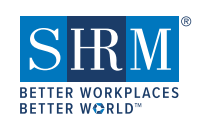The Occupational Safety and Health Administration is a regulatory agency of the United States Department of Labor that originally had federal visitorial powers to inspect and examine workplaces. The United States Congress established the agency under the Occupational Safety and Health Act, which President Richard M. Nixon signed into law on December 29, 1970. OSHA's mission is to "assure safe and healthy working conditions for working men and women by setting and enforcing standards and by providing training, outreach, education, and assistance." The agency is also charged with enforcing a variety of whistleblower statutes and regulations. OSHA's workplace safety inspections have been shown to reduce injury rates and injury costs without adverse effects on employment, sales, credit ratings, or firm survival.

The Family and Medical Leave Act of 1993 (FMLA) is a United States labor law requiring covered employers to provide employees with job-protected, unpaid leave for qualified medical and family reasons. The FMLA was a major part of President Bill Clinton's first-term domestic agenda, and he signed it into law on February 5, 1993. The FMLA is administered by the Wage and Hour Division of the United States Department of Labor.
Human resource management is the strategic and coherent approach to the effective and efficient management of people in a company or organization such that they help their business gain a competitive advantage. It is designed to maximize employee performance in service of an employer's strategic objectives. Human resource management is primarily concerned with the management of people within organizations, focusing on policies and systems. HR departments are responsible for overseeing employee-benefits design, employee recruitment, training and development, performance appraisal, and reward management, such as managing pay and employee benefits systems. HR also concerns itself with organizational change and industrial relations, or the balancing of organizational practices with requirements arising from collective bargaining and governmental laws.

Employee benefits and benefits in kind, also called fringe benefits, perquisites, or perks, include various types of non-wage compensation provided to employees in addition to their normal wages or salaries. Instances where an employee exchanges (cash) wages for some other form of benefit is generally referred to as a "salary packaging" or "salary exchange" arrangement. In most countries, most kinds of employee benefits are taxable to at least some degree. Examples of these benefits include: housing furnished or not, with or without free utilities; group insurance ; disability income protection; retirement benefits; daycare; tuition reimbursement; sick leave; vacation ; social security; profit sharing; employer student loan contributions; conveyancing; long service leave; domestic help (servants); and other specialized benefits.
An employee handbook, sometimes also known as an employee manual, staff handbook, or company policy manual, is a book given to employees by an employer.
California's Paid Family Leave (PFL) insurance program, which is also known as the Family Temporary Disability Insurance (FTDI) program, is a law enacted in 2002 that extends unemployment disability compensation to cover individuals who take time off work to care for a seriously ill family member or bond with a new minor child. If eligible, you can receive benefit payments for up to eight weeks. Payments are about 60 to 70 percent of your weekly wages earned 5 to 18 months before your claim start date. You will receive payments by debit card or check. Benefits equal approximately 70% of earnings and have a maximum per week, for a total of up to six weeks.

The Society for Human Resource Management (SHRM) is a professional human resources membership association headquartered in Alexandria, Virginia. SHRM promotes the role of HR as a profession and provides education, certification, and networking to its members, while lobbying Congress on issues pertinent to labor management.
Annual leave is a period of paid time off work granted by employers to employees to be used for whatever the employee wishes. Depending on the employer's policies, differing number of days may be offered, and the employee may be required to give a certain amount of advance notice, may have to coordinate with the employer to be sure that staffing is available during the employee's absence, and other requirements may have to be met. The vast majority of countries today mandate a minimum amount of paid annual leave by law.
Sick leave is paid time off from work that workers can use to stay home to address their health needs without losing pay. It differs from paid vacation time or time off work to deal with personal matters, because sick leave is intended for health-related purposes. Sick leave can include a mental health day and taking time away from work to go to a scheduled doctor's appointment. Some policies also allow paid sick time to be used to care for sick family members, or to address health and safety needs related to domestic violence or sexual assault. Menstrual leave is another type of time off work for a health-related reason, but it is not always paid.
Paid time off, planned time off, or personal time off (PTO), is a policy in some employee handbooks that provides a bank of hours in which the employer pools sick days, vacation days, and personal days that allows employees to use as the need or desire arises. This policy pertains mainly to the United States, where there are no federal legal requirements for a minimum number of paid vacation days. Instead, U.S. companies determine the amount of paid time off that will be allotted to employees, while keeping in mind the payoff in recruiting and retaining employees.
A reasonable accommodation is an adjustment made in a system to accommodate or make fair the same system for an individual based on a proven need. That need can vary. Accommodations can be religious, physical, mental or emotional, academic, or employment-related, and law often mandates them. Each country has its own system of reasonable accommodations. The United Nations use this term in the Convention on the Rights of Persons with Disabilities, saying refusal to make accommodation results in discrimination. It defines a "reasonable accommodation" as:
... necessary and appropriate modification and adjustments not imposing a disproportionate or undue burden, where needed in a particular case, to ensure to persons with disabilities the enjoyment or exercise on an equal basis with others of all human rights and fundamental freedoms;

The Fair Labor Standards Act of 1938 29 U.S.C. § 203 (FLSA) is a United States labor law that creates the right to a minimum wage, and "time-and-a-half" overtime pay when people work over forty hours a week. It also prohibits employment of minors in "oppressive child labor". It applies to employees engaged in interstate commerce or employed by an enterprise engaged in commerce or in the production of goods for commerce, unless the employer can claim an exemption from coverage. The Act was enacted by the 75th Congress and signed into law by President Franklin D. Roosevelt in 1938.

The California Labor Code, more formally known as "the Labor Code", is a collection of civil law statutes for the State of California. The code is made up of statutes which govern the general obligations and rights of persons within the jurisdiction of the State of California. The stated goal of the Department of Industrial Relations is to promote and develop the welfare of the wage earners of California, to improve their working conditions and to advance their opportunities for profitable employment."
Work–life balance in the United States is having enough time for work and enough time to have a personal life in the United States. Related, though broader, terms include lifestyle balance and life balance. The most important thing in work and life is the personal ability to demonstrate and meet the needs of work and personal life in order to achieve goals. People should learn to deal with role engagement management, role conflict management and managing life needs to achieve balance. Balance is about how to properly achieve the desired work and life satisfaction and needs in a conflict situation.

The Commission de la construction du Québec (CCQ) is responsible for the application of the laws and regulations that govern the construction industry in the province of Québec. Funded by the industry's employers and employees, the CCQ offers numerous services in the areas of social services, vocational training, workforce management, and application of the construction industry's collective agreements.
Parental leave is regulated in the United States by US labor law and state law. The Family and Medical Leave Act of 1993 (FMLA) requires 12 weeks of unpaid leave annually for parents of newborn or newly adopted children if they work for a company with 50 or more employees. As of October 1, 2020, the same policy has been extended to caregivers of sick family members, or a partner in direct relation to the birth of the child therefore responsible for the care of the mother. Although 12 weeks are allowed to them, on average American fathers only take 10 days off, due to financial need. Beginning in 2020, California, New Jersey, and Rhode Island required paid parental leave to employees, including those a part of 50 or less employees. There is no paid paternity leave in the United States currently.

The Setting Every Community Up for Retirement Enhancement (SECURE) Act of 2019, Pub. L.Tooltip Public Law 116–94 (text)(PDF), was signed into law by President Donald Trump on December 20, 2019 as part of the Further Consolidated Appropriations Act, 2020.

The Families First Coronavirus Response Act is an Act of Congress meant to respond to the economic impacts of the ongoing COVID-19 pandemic. The act provides funding for free coronavirus testing, 14-day paid leave for American workers affected by the pandemic, and increased funding for food stamps.

The United States federal government requires unpaid leave for serious illnesses, but does not require that employees have access to paid sick leave to address their own short-term illnesses or the short-term illness of a family member. However, a number of states and localities do require some or all employers to provide paid sick leave to their workers.
The Biden administration COVID-19 action plan, also called the Path out of the Pandemic, is a substantial increase in the use of vaccination mandates as part of the U.S. federal government response to the COVID-19 pandemic announced by President Joe Biden on September 9, 2021, to be carried out by officials in the Biden administration. The plan included various announced prospective efforts, as well as the issuance of several executive orders.





